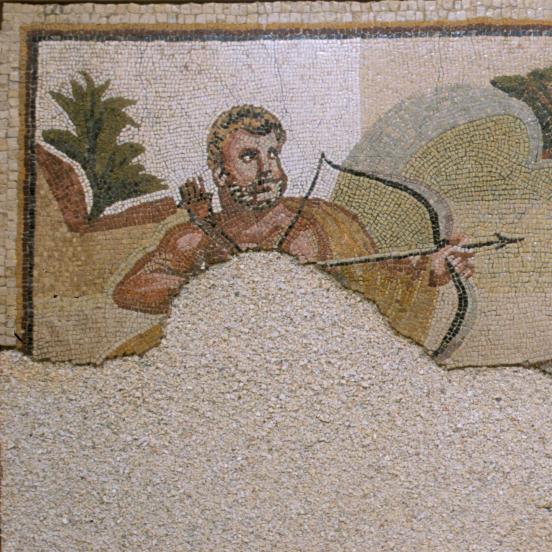Hercules mosaic, Aquincum
From the end of the 2nd century rich urban residences were built such as, for example, the Hercules villa in Meggyfa Street in the territory of the settlement that was formed around the legionary fortress of Aquincum. It received its name from the hero of its noted mosaic floor. Although the middle scene of the mosaic made during the Severan period in the beginning of the 3rd century has been damaged, the depicted mythological story can be easily identified: with his arrow Heracles (Hercules) is aiming at the centaur, Nessos, who tried to rape heroes’s wife, Deianeiria, while crossing the River Euenos. The Euenos personified in the figure of the bearded man can be seen with a sceptre of waterplants in his hand lying at the right edge of the mosaic. This outstanding colourful artwork consisting of nearly 6,000 tesserae was not made in Pannonia, but it is the only so far known imported mosaic in the province. It must have been crafted in a large mosaic workshop, probably in Alexandria. Then in Aquincum local craftsmen built it in and decorated it with a frame of geometric motifs.

